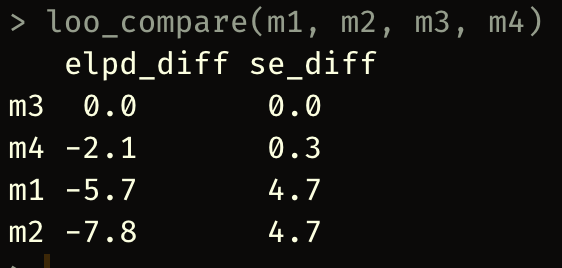
New blog post on the Killingsworth, Kahneman, Mellers paper and censored mixed effects location-scale models.
TLDR: sampling error, censoring, and heterogeneous within-subject variance could all bias the KKM estimates. Better models exist (with brms)
https://rubenarslan.github.io/posts/2023-03-05-multilevel-censored-location-scale-models
RT @annemscheel
Helpful quality content from @dingding_peng as usual, featuring The Law of @lakens' Guidelines (footnote 13) https://twitter.com/the100ci/status/1633114722680569857
RT @jrgptrs
Is Economics self-correcting? We have a new discussion paper, joint with N Fiala & @flneubauer. Quick answer is: No, rather not. We reviewed all replications published as comments in the AER. Plus, we surveyed the authors. A short thread 1/. http://bit.ly/3y0wMYp #EconTwitter
If anything, I see this episode as evidence that adversarial collaborations with a massive power differential don't work.
Like, income explains <1% in well-being. It's loglinear, i.e. diminishing returns. But there has to be a threshold too? How much cope do you need?
---
RT @rubenarslan
@AaronCharlton If I fit a spline on the 15% quantile, it doesn't seem like the threshold is 100k either, more like 200k. Not that this nonlinear fit i…
https://twitter.com/rubenarslan/status/1631661372126687232
RT @rubenarslan
@AaronCharlton Also, I have to induce an artificial ceiling effect of at least the scale midpoint (50) to see the line flatten. Look at that distribution.
RT @rubenarslan
@AaronCharlton I'm a simple man, I see someone claiming that they found just the right quantile regression after lots of tinkering, I run a LOO comparison between a location scale model with and without the moderator.
I thought there would be an effect, but the effect size surprised me! It's half as large as the IQ effect and if you compare the least to most attractive, the differences beat sex, migration background and parental education (yeah Table 2 fallacy, I know I know).
A lunch discussion on beauty premiums in school led me to dig this up. As I read it, one SD (.72) in attractiveness is associated with a .4 increase in grade point (from 6 to 1) in math exams and 1.3 points in arts/music/literature. 10 and 15 year olds.
https://www.degruyter.com/document/doi/10.1515/zfsoz-2012-0206/html
- Website
- https://rubenarslan.github.io
- The 100% CI
- http://the100.ci
- Formr.org
- https://formr.org
- https://twitter.com/rubenarslan
Bayescurious evidence enthusiast http://the100.ci
Topics: evolution, ovulation, mutation, intelligence, personality, sexuality, R, open science & source tools.

























